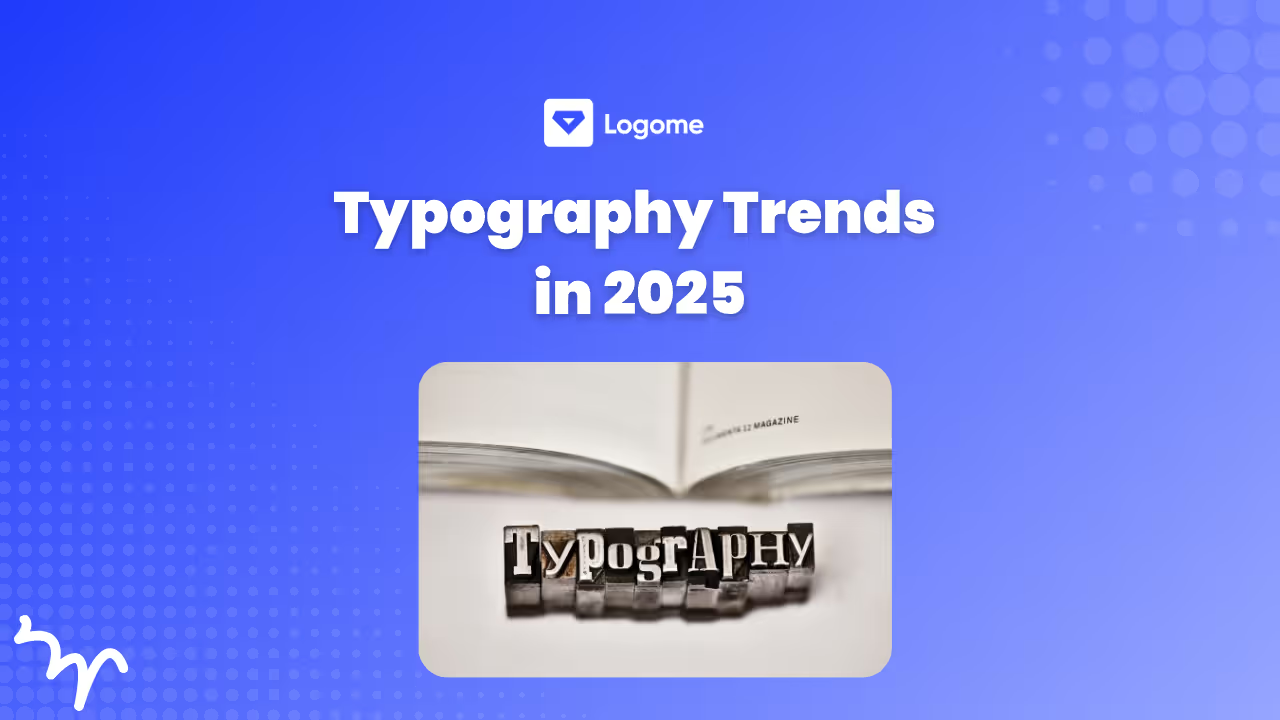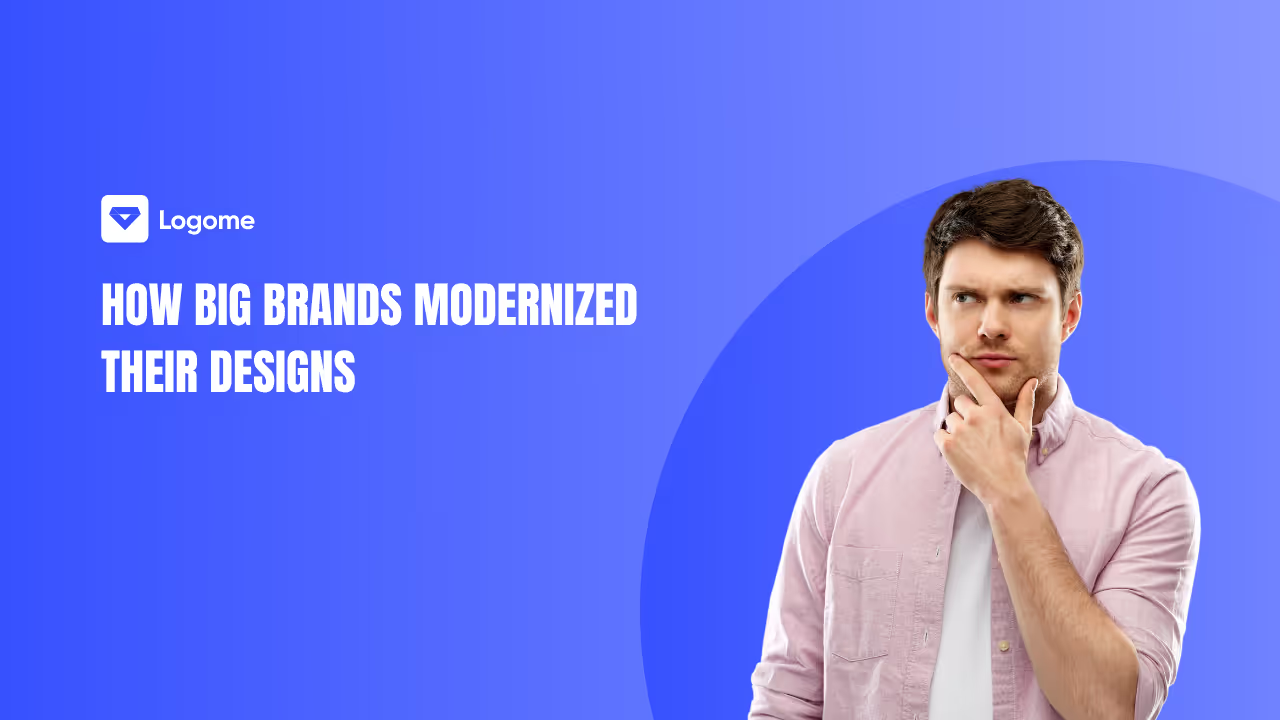Logo vs Wordmark: What's the Difference?
Learn the key differences between a logo and a wordmark to make an informed branding decision. Discover which is best for your business to enhance brand identity and recognition.
Learn the key differences between a logo and a wordmark to make an informed branding decision. Discover which is best for your business to enhance brand identity and recognition.

In the dynamic world of branding, the choice between a wordmark vs logo plays a crucial role in how a business is perceived. Even though they are essential elements of creating brand identity, they both have unique qualities that can greatly affect a company's reputation. A logo is a visual representation of a company that is usually created by combining symbols, icons, or graphics to make the brand easily recognizable. Conversely, a wordmark employs distinctive typography to create a lasting impression while concentrating just on the brand's name.
If companies want to establish a distinctive and long-lasting brand, they must understand how these two brååanding elements differ from one another. This article delves into the nuances of logos and wordmarks, exploring their definitions, examples, and key differences to help you make an informed decision for your brand.
According to a report, 73% of companies invest in design to differentiate their brand from competitors. To create a visually different logo you must understand the difference between various types of logos, to choose the accurate type for your brand identity.
A logo is a graphic design that represents a business or organization, often serving as the first visual element people associate with a company's name. The logo is essential to brand identification because it makes a strong first impression and promotes brand recognition. Because of their versatility, they can be used on a wide range of marketing products, such as brochures, websites, and stationery.
The origins of logos can be traced back to ancient times. Early humans communicated using symbols they drew in their cave paintings, and modern logos also had their roots in Egyptian hieroglyphics. Early instances of logos, which stand for identity and ancestry, were medieval family crests. Despite their evolution in appearance and complexity, the primary objective of logos remains unchanged: to provide instant brand recognition. In contemporary times, this objective is further enhanced by technological advancements, with artificial intelligence now playing a significant role in designing logos from scratch for branding and marketing purposes.
There are different kinds of logos, each with a distinct purpose for brand identity:





Wordmarks are designs for logos that contain just the company name alone, without any mascots, symbols, or badges. Unique typography is used in this design to create a visually distinctive business name that is the main focus. Wordmarks' minimalist design emphasizes typography and spacing to make the text both aesthetically pleasing and easily readable. For smaller spaces, such as favicons and social media profiles, where a whole wordmark would not be practical, wordmarks can also include versions of monogram logos.
Given that wordmarks increase brand awareness and recognition, they work especially well for businesses with distinctive or memorable names. The design's simplicity can convey a sense of professionalism, clarity, and focus, making it ideal for industries where these qualities are paramount.
In the debate of logotype vs wordmark, the latter offers a straightforward approach that can be highly effective in establishing a strong and recognizable brand identity. By focusing solely on the brand name, wordmarks make it easy for consumers to remember and identify the brand, reinforcing its presence in the market.

Several well-known companies with wordmark logos include Google, Amazon, Coca-Cola, and Calvin Klein. In many instances, the words have taken on the role of the brand's iconic image, easily recognizable around the globe.

To evoke a sense of modernity and sophistication, the minimalist Calvin Klein wordmark employs a crisp, sans-serif font type for branding. The design's minimalism complements the brand's positioning as a pioneer in modern fashion.
When comparing wordmarks vs logos, it's essential to understand their fundamental differences. The key differences between the two are given below:
Therefore, understanding the key differences between wordmark vs logomark, wordmark vs logotype or logo vs wordmark can help businesses make informed branding decisions. Each type offers unique advantages, and the choice should align with the brand’s specific goals and identity to effectively connect with the target audience.
Evaluating your company's branding objectives and needs is necessary when deciding between a logo and a wordmark. There are unique benefits to both logo forms that can complement various facets of the business identity.
While deciding between a logotype vs wordmark, choose a logo if you desire:
While choosing between a logo vs wordmark for your business, choose a wordmark if you prefer:
Many businesses build a strong and recognizable brand identity by combining their wordmark and logo. Together, they ensure that the brand name and visual components are appropriately represented in a variety of branding situations while offering flexibility.
In conclusion, the decision between a wordmark vs logo, whether it's a logotype vs wordmark or wordmark vs logomark, should align with your business’s unique characteristics and branding objectives. Make sure the option you select appeals to your target market and reflects the essence of your brand. Tools such as Logome AI could be very useful for an easy creation process.
To summarize, a logo is an intricate graphic representation of a company, often including badges, mascots, or symbols while a wordmark is a text-based design that uses unique typography and spacing to focus on the company name alone. Understanding the differences between logos and wordmarks is essential for making informed branding decisions.
Selecting between a logo and wordmark is crucial for defining a brand's identity. Logos offer a versatile and instantly recognizable visual, while wordmarks emphasize the brand name through unique typography. Both elements play a vital role in creating a strong brand identity, and the choice between them should be guided by your brand's name, industry, personality, and usage needs. Exploring creative options, like how to create dazzling glitter logos, can provide additional inspiration.
Choosing the right branding element - whether a logo, wordmark, or a combination of both can significantly impact how your audience perceives your brand. By following the insights provided in this article, you can make a well-informed decision that enhances your brand’s recognition and appeal.



Discover how 500,000+ businesses and creators are using our AI logo maker in their Logo creation.



